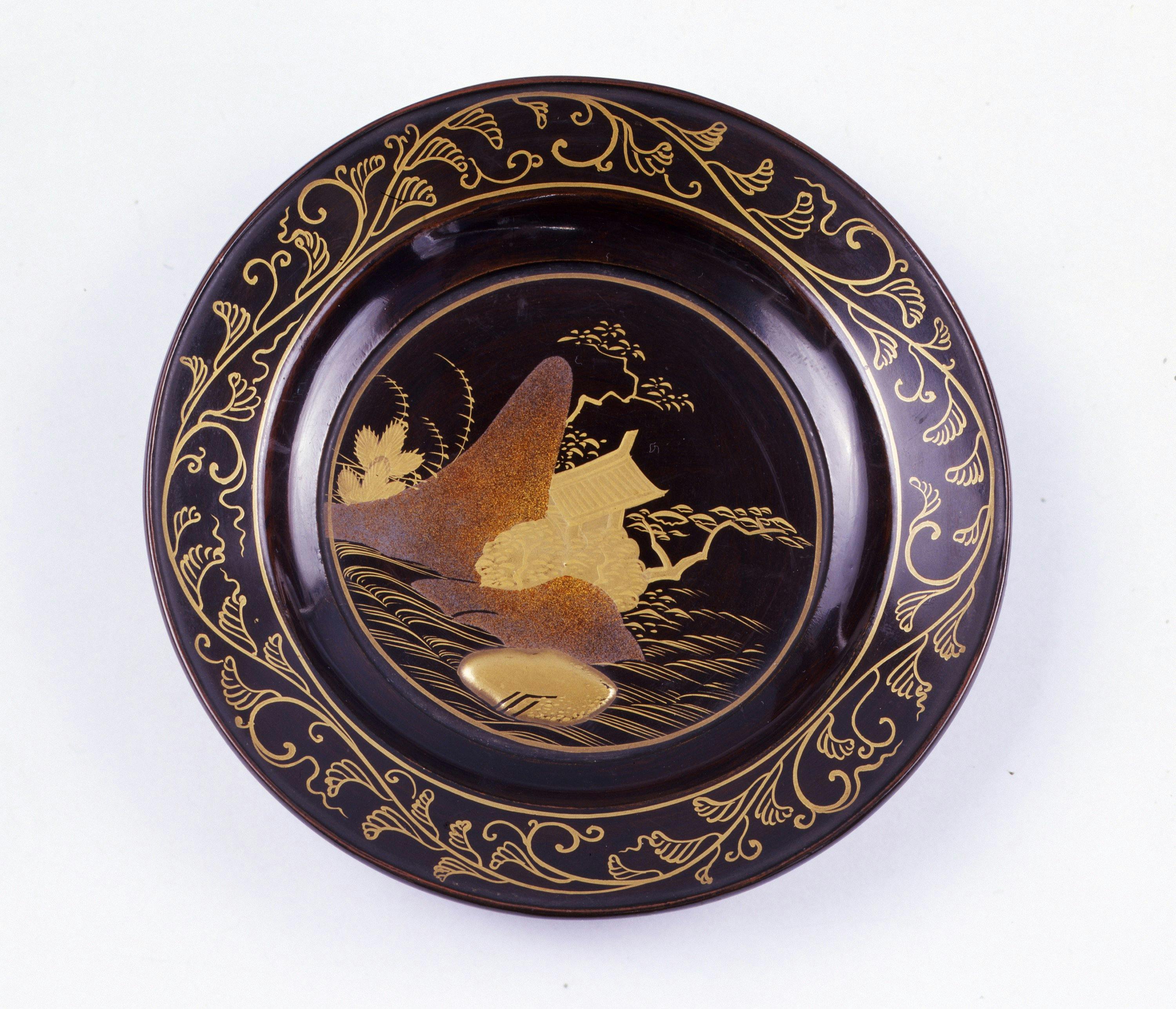Japanese lacquered and painted plate featuring a river landscape with plants
Japanese Manufacture
In spite of its antique origins, Japanese lacquering developed on a wide scale thanks to the importation of Chinese decorative techniques during the 7th century. Although many have tried to imitate it, lacquering remains the exclusive prerogative of Japan.
This plate in lacquered wood shows a landscape with, in the centre, a hill dotted with blossoming trees, a building in the background and a river in the foreground. On the rim of the plate is a particularly stylised band of vegetation.
The techniques used to decorate this plate, known as hiramaki-e, or a variation of the maki-e technique. This latter involves an initial application of dark lacquer (usually black) onto the object to create a background for the decoration. The design is then painted in transparent lacquer and before this dries, it is covered in metal fragments to create a metallic design on a dark background. The technique used on this plate involved decoration with gold powder, which was then covered with a coat of clear lacquer.
